

Max Davies
2026 Toyota HiAce review
54 Minutes Ago
Already one of the world’s greatest driving experiences, the GTS’s retractable hardtop only amplifies the Ferrari 296 driving experience.
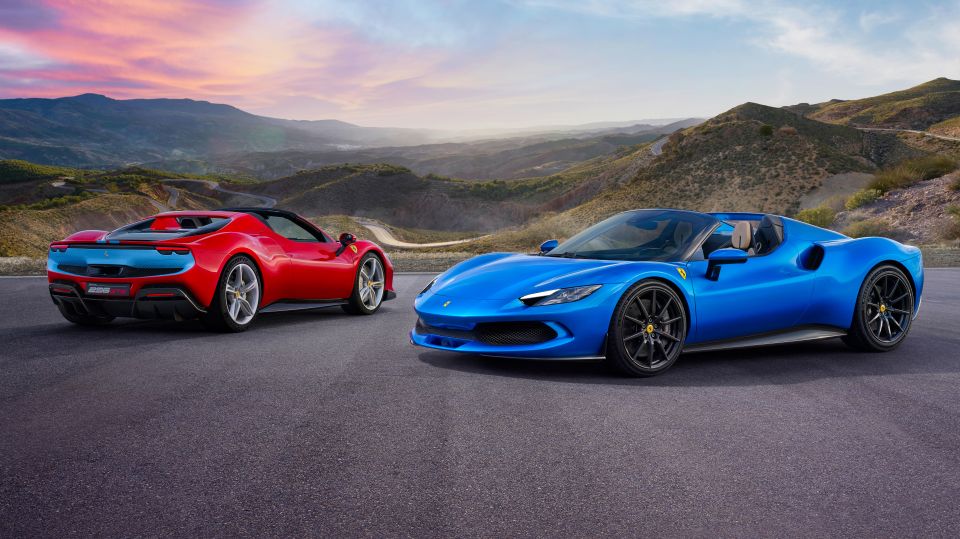
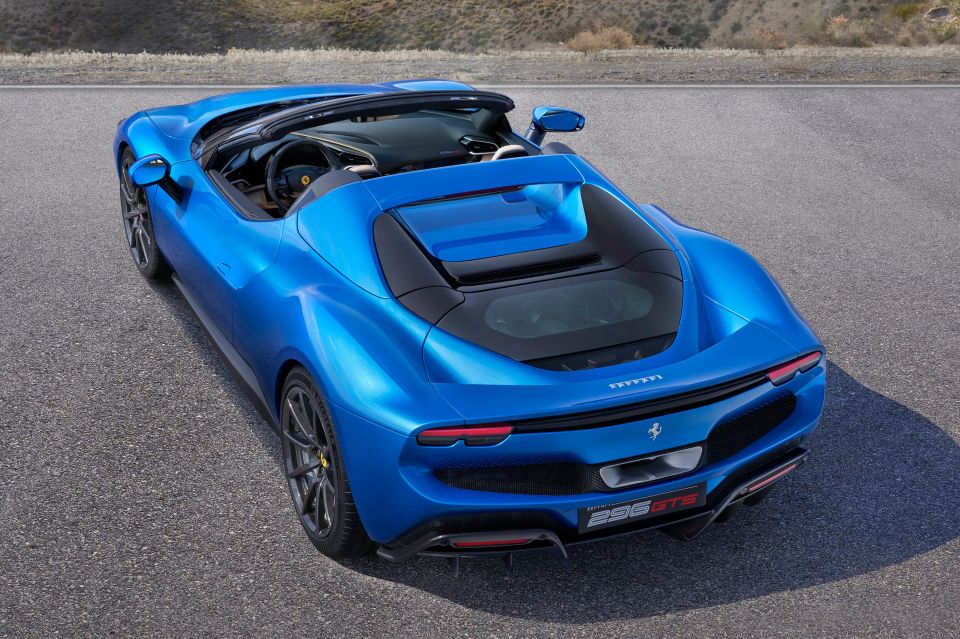

Senior Road Tester

Senior Road Tester


Senior Road Tester

Senior Road Tester
Where expert car reviews meet expert car buying – CarExpert gives you trusted advice, personalised service and real savings on your next new car.
When Ferrari ditched its twin-turbo V8 for a V6 hybrid powertrain in the 296 GTB in 2021, no one thought it would be such a game changer in the holistic way it truly was.

Motoring journalists around the globe invited to the global launch in Spain, including yours truly, were unanimous in their praise for the latest hybridised Ferrari. Not just for the all-new V6 powertrain, but across all aspects of the car from design to dynamics and everything else in between.
With the 296 GTB, Ferrari hadn’t just created one of the most beautiful mid-engine Ferrari road cars in a decade or more, it also managed to blend cutting-edge powertrain technology using a small displacement engine that somehow made more power than the previous turbo V8 with a better noise than F1 cars.
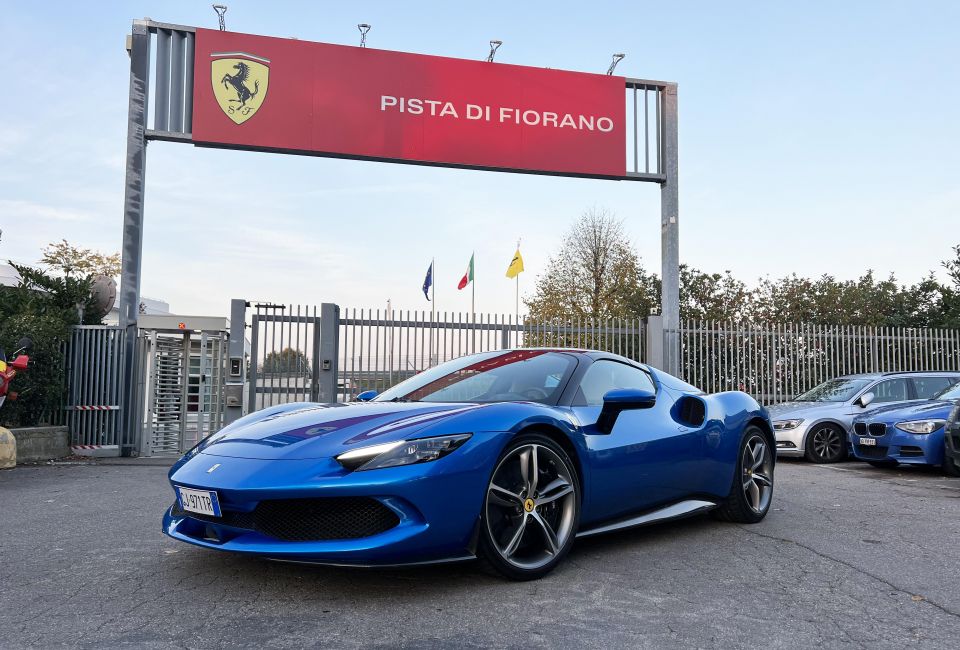
But while cashed-up Ferrari enthusiasts religiously choose the fixed-roof Berlinetta body over any open-top version for chassis stiffness alone, other buyers putting lifestyle and aesthetics ahead of all-out tarmac assaults and track days will likely see more benefit in a retractable hard top.
That’s the thing with the 2024 Ferrari 296 GTS; you get the all-seasonal flexibility and fun that comes with open-air motoring, but with the same uncompromising performance prowess as the fixed roof version with even more of that glorious Ferrari V6 symphony that we raved about with the 296 GTB.
Never mind the 296 GTS is heavier by 70kg thanks to its complex two-piece roof mechanism, its chassis has been optimised for significantly better torsional rigidity compared with previous Ferrari Spiders.
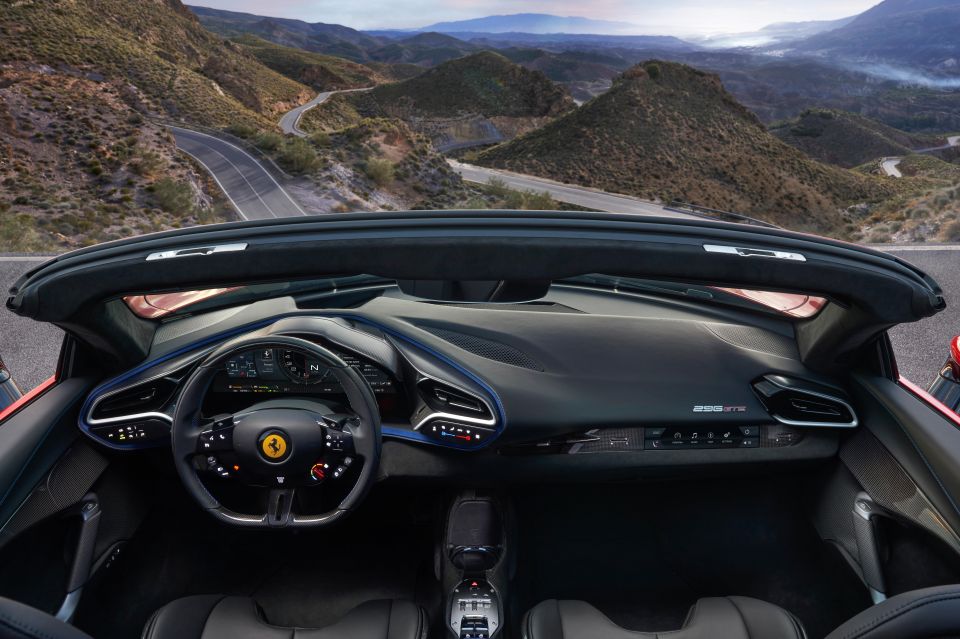
There’s extra carbon-fibre reinforcement across the A-pillars, B-pillars and sills, which makes the 296 GTS 50 per cent more rigid than the F8 Tributo Spider while so-called bend stiffness is up by 8.0 per cent.
Despite the obvious constraints and functional challenges with a retractable hard top, the wing profile and flying buttresses guarantee the same aerodynamic and thermal efficiency of the 296 GTB.
That in itself is extraordinary, and just another engineering achievement that allows this open-top Ferrari to match its fixed-roof sibling in a 0-100km/h drag race while achieving the same 330km/h top speed – with the roof down.
Pricing for the Ferrari 296 GTS starts at $668,164 plus on-road costs and options, whereas the 296 GTB costs $604,000 after a price bump from $568,300.
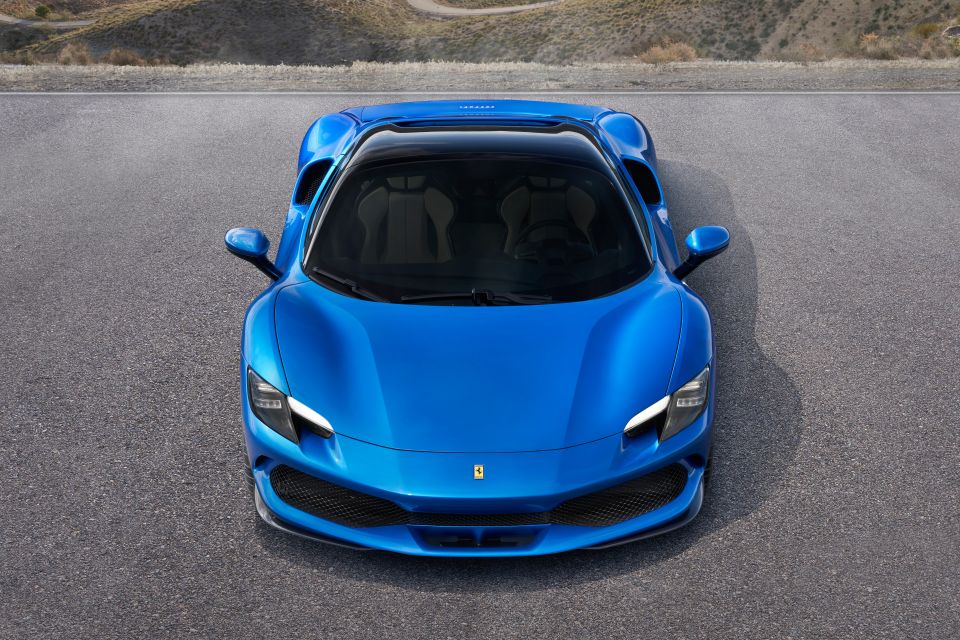
Rivals are few and far between, but include the Lamborghini Huracan EVO Convertible ($515,493) but it’s an MY23 given Huracan’s replacement will be an all-new model using a twin-turbo V8 with PHEV.
The McLaren 750S Spider is a top-notch competitor priced from $654,650, or 750S Coupe from $585,650.
The Porsche 911 Turbo S Cabriolet is another equally capable Ferrari rival for fans of open-air motoring and is priced from $559,400, whereas the coupe starts from $538,700.
Buy your new car without the stress. It's fast, simple and completely free.

Great service from Travis and team, second time I have used this business would not hesitate to recommend them to anyone
Craig C.
Purchased a Ford Ranger in Sunshine Coast, QLD
CarExpert helped Craig save thousands on his Ford Ranger, now let us save you on your next new car.
Find a dealIt doesn’t seem to matter what model Ferrari you climb into, it never fails to excite or look and feel more special than all its rivals – it’s an ambience that’s unique to the Prancing Horse brand.

Even though it’s an all-digital experience in the cockpit these days, just sitting in a 296 GTS makes you feel like you’re piloting a full-blown Ferrari F1 car. It’s totally driver centric and pure magic from an aesthetic perspective.
That’s the thing with Ferrari, it doesn’t seem to matter how sharp the focus is towards the sheer thrill of driving at full noise, the cabin still looks and feels as though Hermes did the fit out.
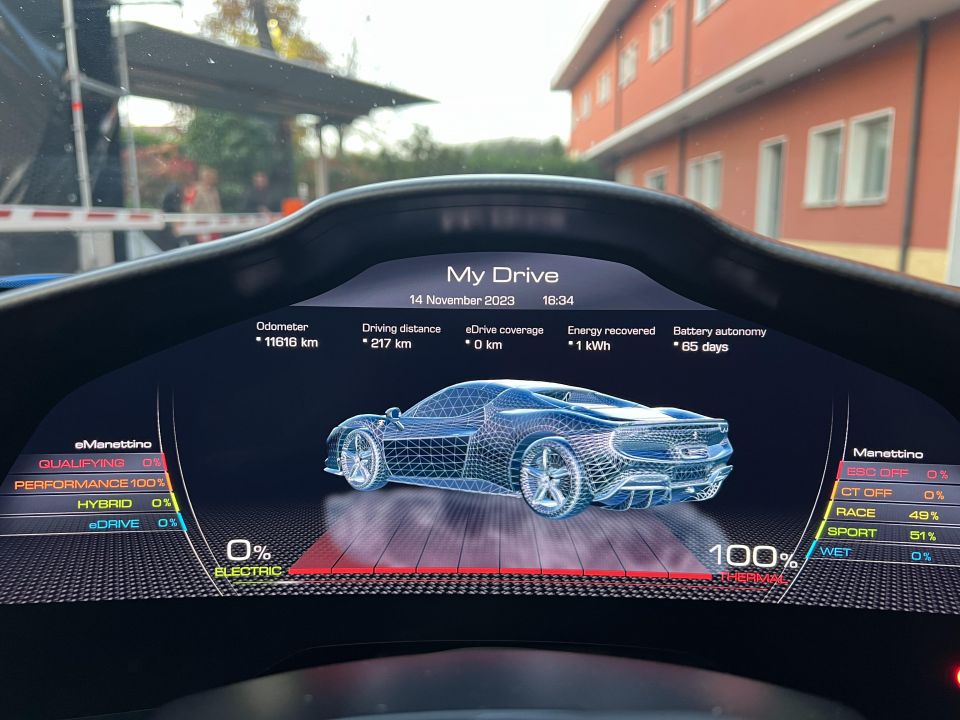
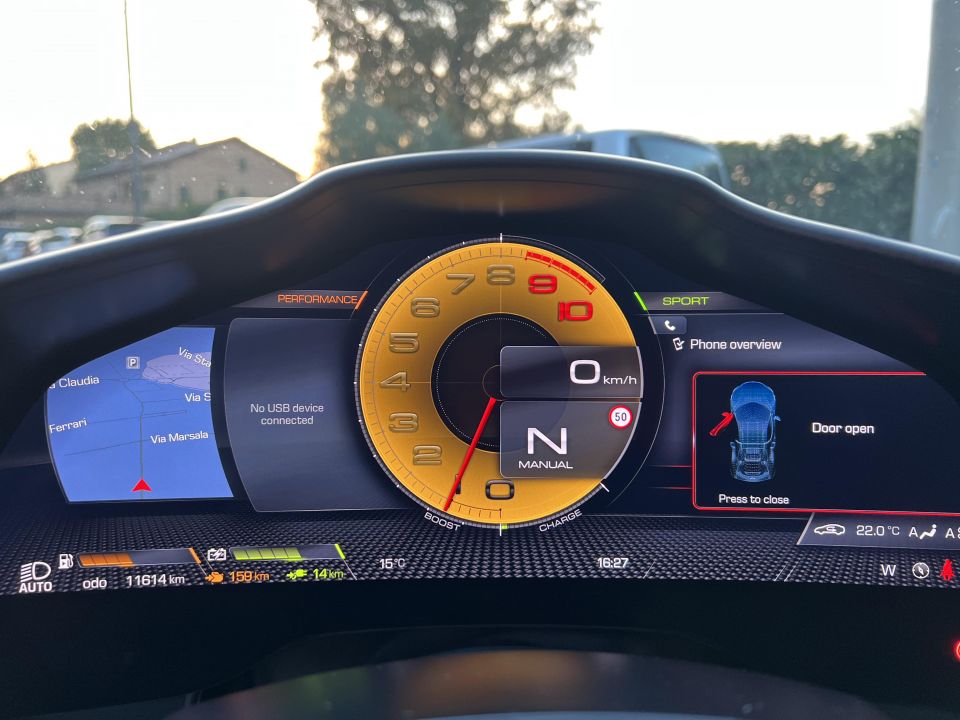
There are three screens in one huge digital driver’s display, and all are configurable using capacitive pads and buttons on each side of the carbon-fibre and leather-wrapped flat-bottom wheel, which looks to have been taken directly from the stratospherically priced SF90.
Centre stage on the big screen is the usual yellow-backed tachometer found in every other Ferrari I’ve driven of late, but which adds smaller pop-up boxes indicating speed and gear position. At the touch of button you can convert the entire instrument display to a navigation screen or simply have it displayed on the right flank.
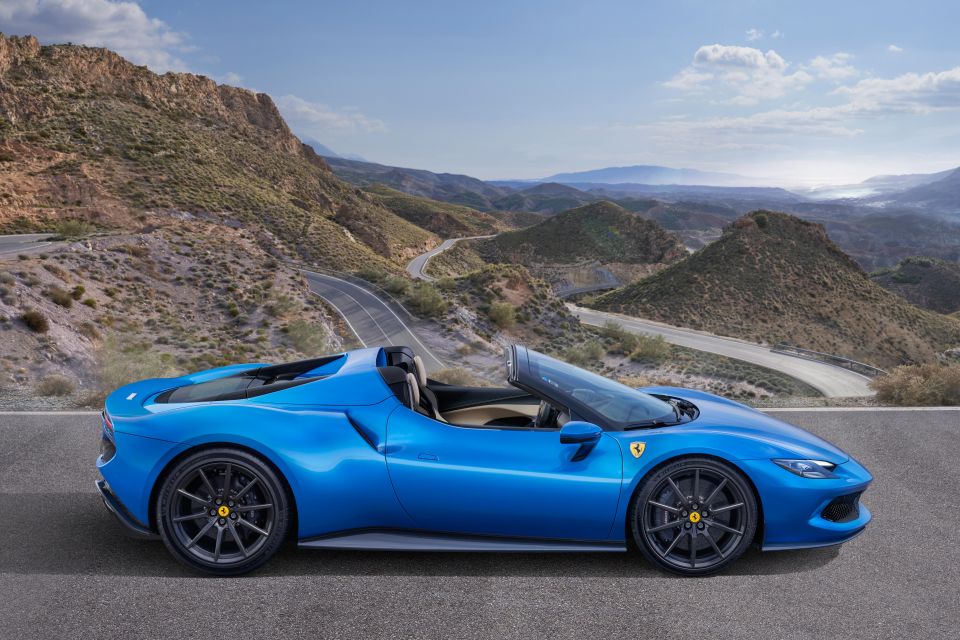
Ferrari’s steering wheels are proper things of beauty and no less at home in a contemporary art gallery. You’ve got to love the LED shift-lights on top and the finest set of carbon-fibre paddleshifters in the business attached to the steering column.
The only physical switch is Ferrari’s trademark Manettino fashioned in red anodised aluminium. It’s used by the driver to scroll through the various drive modes available; Wet, Sport, Race and CT Off.
On the opposite side you’ll find the ‘eManettino’ switch that uses capacitive buttons for the powertrain modes (eDrive, Hybrid, Performance and Qualify), with each selection highlighted in fluro green either side of the rev gauge.
Ferrari’s modern take on its gated manual shift box in past classics is another entirely functional yet jewel-like highlight in the 296 GTS cockpit. It’s genuine metal attached with real metal screws in a glossy chrome casing (or carbon-fibre as an option).
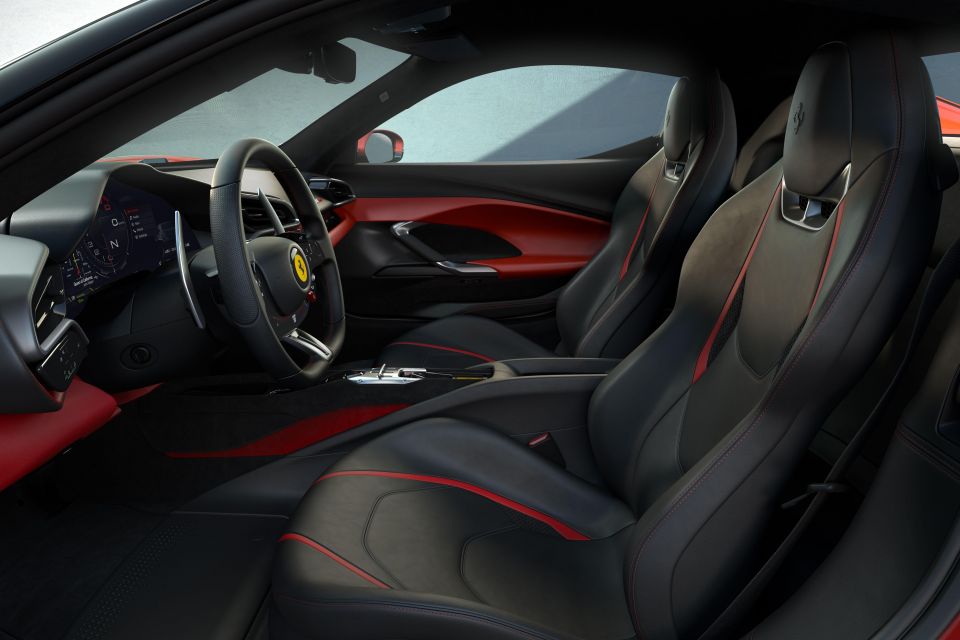
Those superbly contoured and upholstered seats are set deep into the car – like every other Ferrari sports car and grand tourer – and offer one of the most coveted driving positions in the segment.
The view through the steering wheel of those beautifully sculptured wheel arch bulges is second to none and a feature of every mid-engine Ferrari I’ve ever driven from 328 GTS and on.
Our tester was also fitted with another screen in the dashboard ahead of the passenger with a configurable display showing speed, revs, gear position and media.
While it’s a relatively cosy fit inside, there’s still space for keys, wallets, phones and even sunnies throughout various receptacles in the centre console.

There’s even a single cupholder, but larger stuff will need to be stowed in the ‘frunk’ which is similar in size to the Porsche 911.
Unlike its Lamborghini Huracan rival, the Ferrari 296 GTS offers excellent rear vision even with the roof closed, while utterly unencumbered when opened.
It’s the same mid-mounted 3.0-litre twin-turbocharged V6 used in its 296 GTB siblingwith a 120-degree angle between the cylinder banks in which two turbos are mounted.
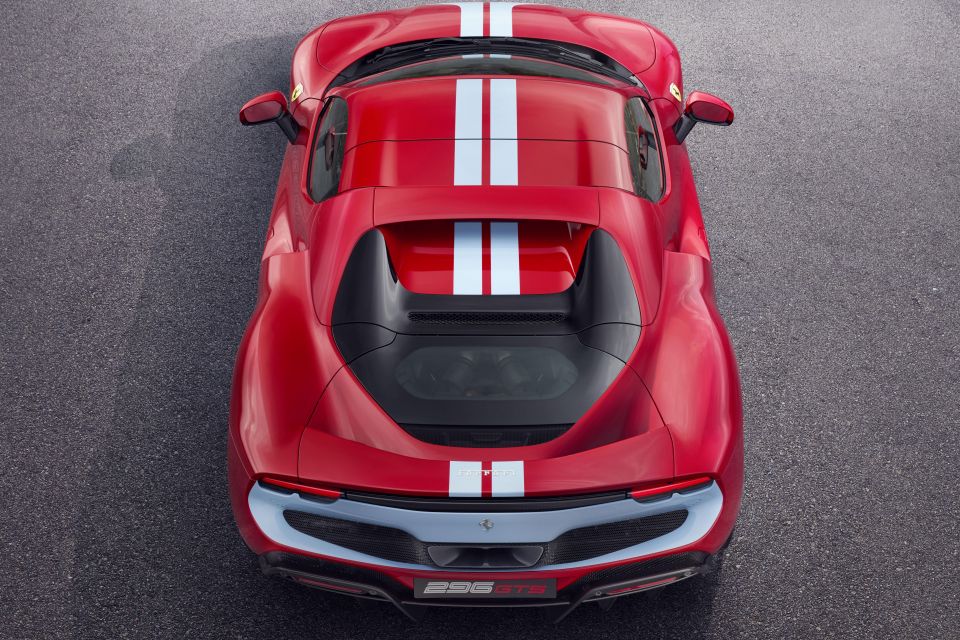
Key advantages to this architecture are a lower centre of gravity with reduced engine mass and very high outputs. The V6 turbo is also paired with an plug-in (PHEV) electric motor mounted between the engine and the eight-speed dual-clutch gearbox.
When the internal-combustion engine and single electric motor work together they produce a benchmark 610kW of power at 8000rpm (it will rev to 8500rpm), while peak torque of 740Nm comes on song at 6250rpm. By way of comparison the McLaren 750S makes 552kW of power and 800Nm of torque through a seven-speed dual-clutch transmission.
As expected, performance from anywhere throughout the rev range is simply mind-blowing. The Ferrari 296 GTB can jet from standstill to 100km/h in 2.9 seconds, and from zero to 200km/h in a ballistic 7.6 seconds (7.3s GTB). Top speed is 330km/h for both versions – that’s with roof open for the GTS.
In addition, the new V6 plug-in hybrid can drive on purely electric power in eDrive mode for up to 25km and at speeds of up to 135km/h. It comes as no surprise the combustion chamber is from the SF90 Stradale and features a 350-bar pressure injection system that improves performance while reducing emissions.
The IHI turbochargers have been redesigned using higher performance alloys, allowing the turbos to increase revs to 180,000rpm. Those turbos are mono-scroll and use a smaller compressor wheel and rotors compared with the V8 in the F8 Tributo.
Importantly, the crankshaft is made from case-hardened nitrided steel which guarantees its resistance to high loads as well as allowing for 100 per cent of the rotating masses and 25 per cent of the alternating masses to be balanced, despite the engine’s compact proportions and lightweight attributes.
As a hybrid Ferrari claims fuel consumption of 6.4L/100km on the combined cycle, using premium 98 RON and a 65L fuel tank. Combined CO2 emissions are 149g/km.
Just the thrill of entering the gates of Ferrari’s old factory is a bona fide bucket-list experience but then to see your allotted 296 GTS in Blu Corsa (my favourite is Rosso Mugello – solid colour) always feels surreal to me.
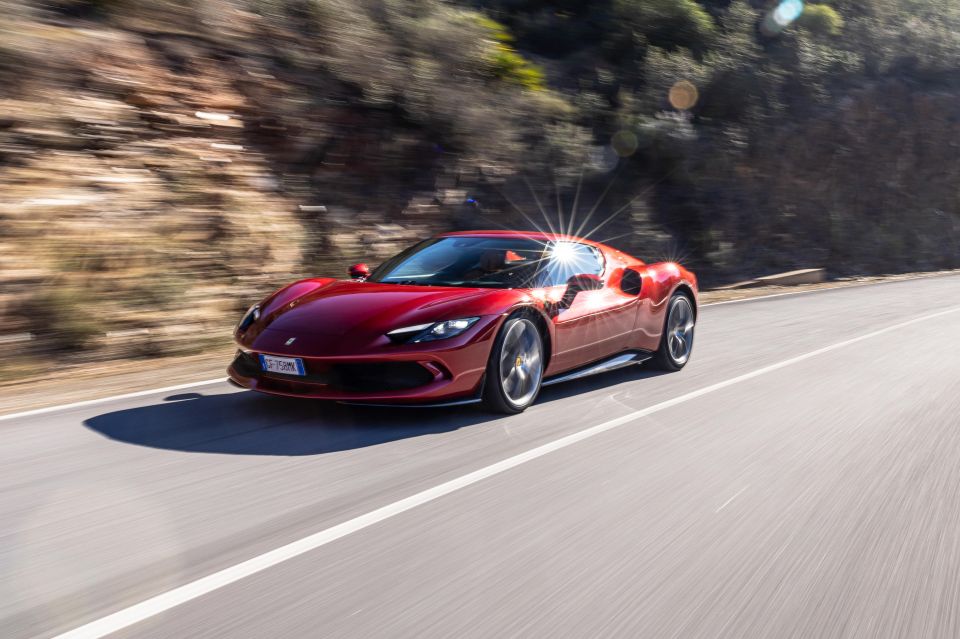
There are papers to sign but I’ve never read the stuff and always happy to sign away regardless.
The key fob itself is nothing less than a piece of Ferrari jewellery – Giallo Modena background with the Prancing Horse front and centre in black that sits secured in its very own receptacle in the console.
Given I’d been on the launch of the 296 GTB a year earlier, it only took a minute or two to sync my phone and head off for my sighting drive around the gastronomic delights of Parma.
Hitting the capacitive button on the steering wheel lights up the driver’s display but not much else. The default mode on start-up is Hybrid, and while that’s endlessly useable at home in the city where early morning commutes might be the norm, it wasn’t what we were after today for our journey north.
Instead, you’ll want to tap on the eManettino on the steering wheel and select Performance, which means the ICE is always on and the battery remains topped up for the kind of spirited sprint we’re after today.
Nevertheless, if you want maximum attack mode in your 296 GTS, best choose Qualify (don’t you love it), though expect to get lower battery charging – or none at all when you really start to get on it.
Normally I’d drop the roof immediately but not wishing to appear like a tosser while leaving the factory (and it’s cool this time of the year too), I chose to leave it closed until I got to my lunch stop. Either way, the sheer acoustic delight of that high-temp Ferrari V6, even at idle, is just as intoxicating as I recall from my time in the GTB.
It isn’t long before I switch the Manettino from Sport to Race for an all-round sharper response rates from the throttle, gearbox and steering – which always feels a tad light to me. You get used to it fairly quickly though and don’t give it a second thought.
Mind, the eight-speed DCT transmission is brilliantly intuitive and will downshift two gears in a split second in auto mode, even in Sport. But there’s nothing like shifting manually in a 296 – or any Ferrari. It somehow makes you feel far more accomplished as a driver – and it just feels right.
I’d also forgotten just how explosively quick the 296 is. Even after a flat-out track session in the McLaren 750S in Portugal a few days prior, the Ferrari feels accelerates with intense ferocity and with an exhaust note none of its rivals can match – not even close. This is what a Ferrari F1 car should sound like.
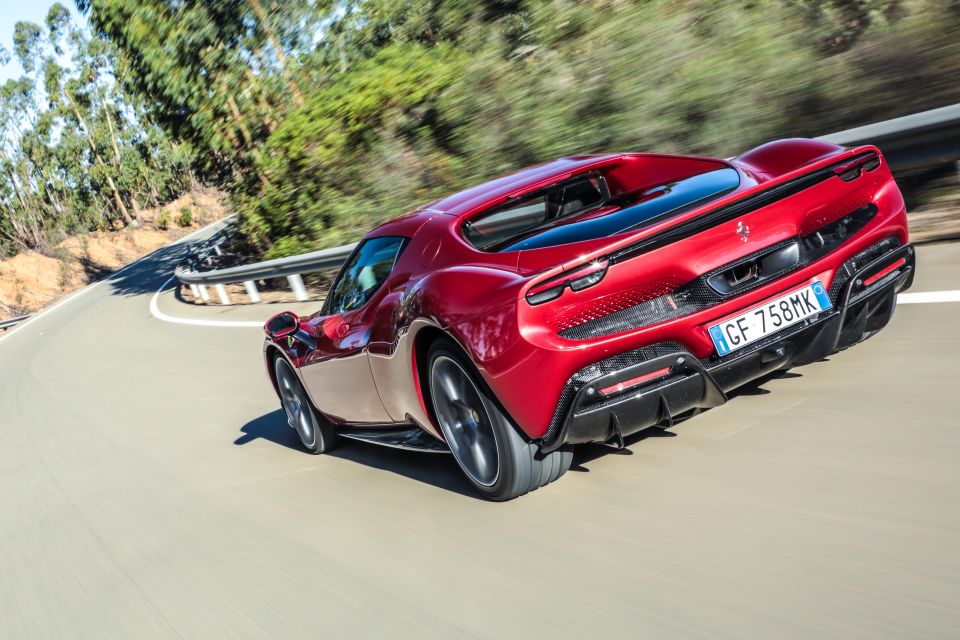
I’ve dropped the rear-screen glass for a few more decibels, but it’s also time to open the roof entirely. There’s a switch for opening and closing and it takes just 14 seconds (not the fastest roof in town), but it’s seamless and a surprisingly quiet mechanism that works at speeds up to 45km/h.
You tend to forget how much fun it is driving a Ferrari Spider is. The sound of the so-called ‘Piccolo V12’ at full noise is beyond intoxicating in this 360-degree surround-sound state. Throttle response is off-the-clock too, and there’s not a millisecond of turbo lag with this hybrid powertrain. It’s mind-blowing stuff.
Like the 296 GTB, it’s not just the complete absence of lag with even the smallest of throttle inputs anywhere throughout the rev range; it’s as much about the totally linear feel of the major controls that make this Ferrari so addictive and liveable at the same time. The folding hardtop adds just another element to an already brilliant driving experience.
Then there’s the superb balance and limpet-like grip on the tarmac, despite huge power going to the rear wheels. It’s massively reassuring especially on the B-roads out of Parma. Guaranteed you’ll be tempted to push on through the twisty stuff, but my personal eight-tenths level is rewarding enough with the GTS today.
Fast directional changes are another hallmark of this new Ferrari. Even though the GTS tips the scales at a dry weight of 1540kg (70kg more than the GTB) even with the hybrid system, there’s always a feeling of cat-like agility at play here. It feels lighter than all its rivals in this area.
The Michelin tyres definitely play a major role in the way this car handles and rides, along with Ferrari’s tune of the Magneride dampers. The 296 just never feels unsettled no matter how far you dial things up, or what state of road surface you’re on.
While the 296 GTS is capable of huge speeds, its stopping power from the 398mm carbon-ceramic brakes is sublime in its ability to wipe of big speed. Ferrari’s latest ‘ABS evo’ system, which compensates for late braking and turn in without the nasty effects of understeer, is uncanny.
Seems I’ll be delayed leaving Parma given the group of kids who have surrounded the car and wanting rides – how can you not oblige – one of these locals might just end designing Ferraris one day.

Where expert car reviews meet expert car buying – CarExpert gives you trusted advice, personalised service and real savings on your next new car.
296 GTS highlights:
Options:
Ferrari buyers (like all other super sports car brands) generally like to personalise their cars from an endless list of options, so the inventory of standard features can be minimal, though Australian-delivered cars get more than some other markets.
Ferrari doesn’t crash test its cars so there’s no ANCAP safety rating.

Nevertheless, standard safety kit includes dual front and side airbags in the door panel for head protection, seatbelt pretensioners, anti-lock brakes with electronic brake force distribution, stability control (eSSC), eDiff, front & rear parking sensors, reversing camera and a tyre-pressure/ temperature warning monitor.
Braking distances on the 296 GTB and GTS are significantly improved over the F8 Tributo thanks to the ABS EVO and its integration with the 6w-CDS sensor, which also delivers more consistent braking force under repeated heavy braking.
Ferrari offers a three-year, unlimited-kilometre warranty on the 296 GTS, along with a maintenance program which covers all scheduled servicing for the first seven years of the car’s life.
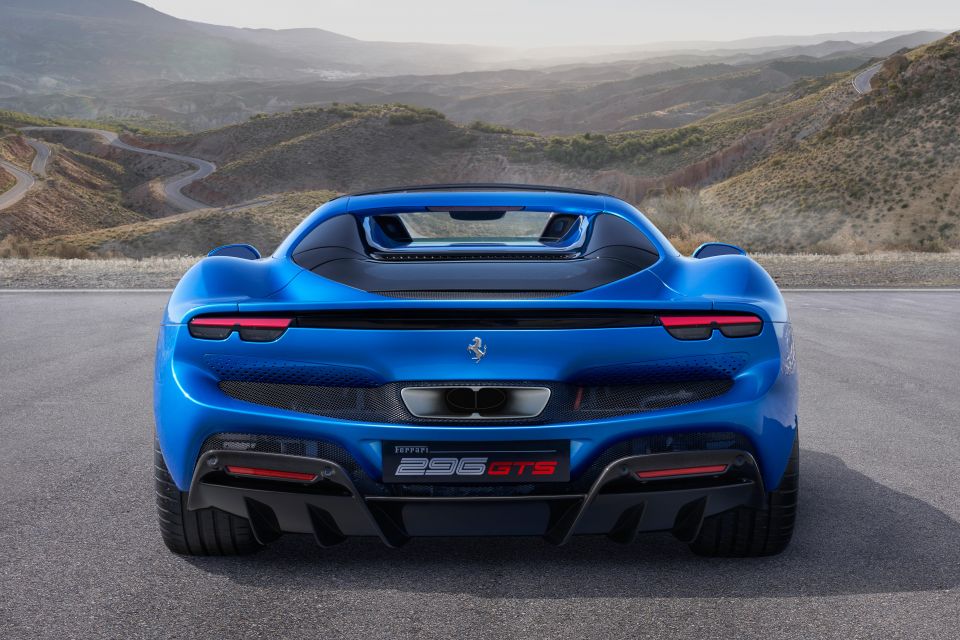
Those service intervals are recommended at either 20,000km or once a year, whichever comes first.
At nearly $700,000 plus on-roads and a few mandatory options, the Ferrari 296 GTS is big bucks.
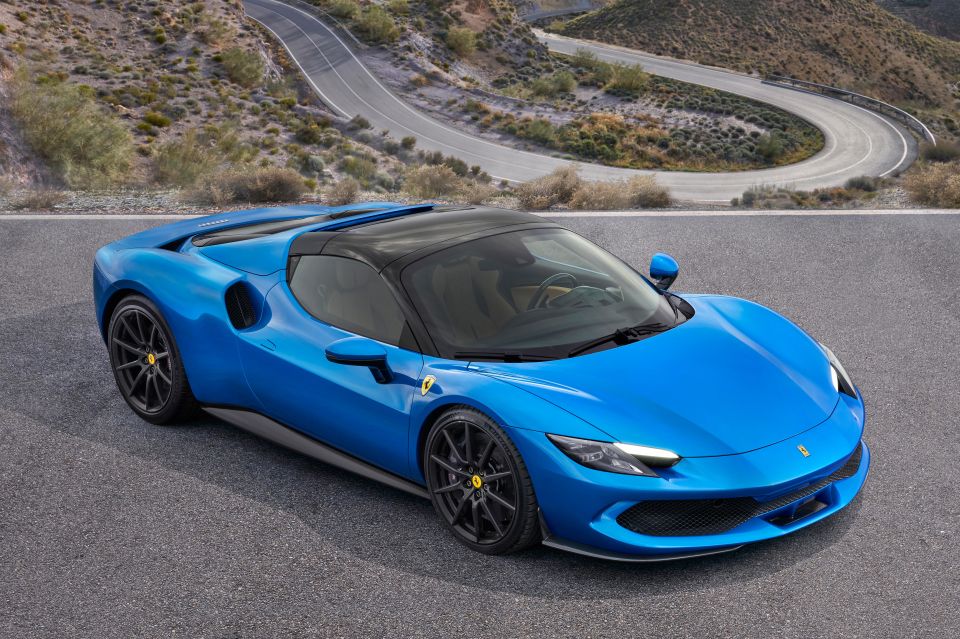
But with an average wait time of around 18 months, clearly there are plenty of willing buyers who don’t mind the asking price.
And why should they. They’re buying into one of the world’s greatest on-road driving experiences, only with the GTS’s retractable hard top, all the sensory pleasures you get with the fixed-roof GTB are enhanced by a significant multiple.
It’s also one of the most aesthetically beautiful Ferraris of the last decade and a factor that can sometimes mask its mind-blowing performance credentials.

Click the images for the full gallery
BUY: Ferrari 296 MORE: Everything Ferrari 296
Where expert car reviews meet expert car buying – CarExpert gives you trusted advice, personalised service and real savings on your next new car.
Anthony Crawford is a CarExpert co-founder and senior presenter with 20+years in automotive journalism and content creation.


Max Davies
54 Minutes Ago


William Stopford
17 Hours Ago


Ben Zachariah
18 Hours Ago


Derek Fung
18 Hours Ago


Matt Campbell
1 Day Ago


William Stopford
2 Days Ago